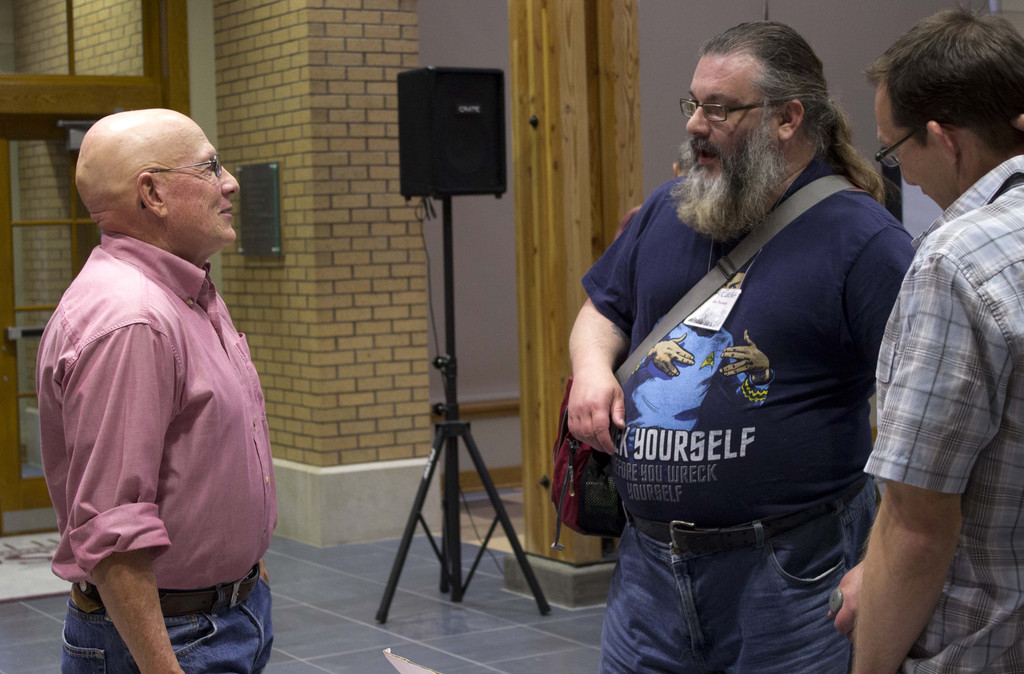Keynote speaker encourages writers to expose 'inner beasts'

In the keynote address of the Story Catcher Summer Writing Workshop and Festival Tuesday, award-winning author and buffalo rancher Dan O'Brien said he was pleased to return to Chadron, because he considers it to be a special place. He lives on a South Dakota buffalo ranch about two and a half hours north of Chadron.
The four-day event is hosted at the Mari Sandoz High Plains Heritage Center at Chadron State College.
Dr. Matt Evertson, organizer of the event and chair of the CSC English department, introduced O'Brien and told the audience that he and Dr. Teresa Frink have used O'Brien's book "Buffalo for the Broken Heart" as a text in their First Year Inquiry course "Home on the Range." He said some students loved the book, others hated it, but the overall response was enthusiastic.
"It gets under your skin, confronts you and makes you ask tough questions," Evertson said.
"Buffalo for the Broken Heart" won the Western Heritage Award for best non-fiction in 2001 and O'Brien's "The Contract Surgeon" won the same award in 1999. He is the winner of the Iowa Short Fiction Award, two National Endowment for the Arts Grants for fiction, a Bush Foundation Award for writing, a Spur Award, two Wrangler Awards from the National Cowboy Hall of Fame, and an honorary Ph.D. from the University of South Dakota.
O’Brien spoke about the transformation of a humble pioneer to a greedy businessman using excerpts and photos from James R. Mead's autobiographical “Hunting and Trading on the Great Plains 1859-1875."
“I felt a sense of unease about the author’s honesty as I read this book,” said O’Brien. “Mead was capable of recognizing any beast of the plains, but not those in his own soul. It’s our job to tell the truth. It takes a lot of guts. That's what we're doing here. The best memoirs are startling. Those are the ones I want to read.”
Mead came to eastern Kansas from eastern Iowa as a 23-year-old and wrote eloquently about his experience seeing the first vast herd of buffalo and other kinds of wild game on every side, grazing and reposing.
As Mead’s slaughter of buffalo grew exponentially over three decades, he lost his innocence becoming a player and prominent businessman with a growing fortune. He met men such as Kit Carson, and built a mansion in what later became Wichita, according to O’Brien.
O’Brien read the last few pages of Mead’s book that described the stark and devastated environmental and human conditions on the plains as a result of the destruction of enormous buffalo herds. Mead played a central part in the destruction but he failed to acknowledge it.
“We all have a way of knowing if a book is honest, just like knowing if people we meet are honest. The best writers, who write the best books, unlike Mead, are those who know there are beasts in their own soul and eventually let those beasts out on the page,” O’Brien said.
Category: Campus News, English, Sandoz Society
